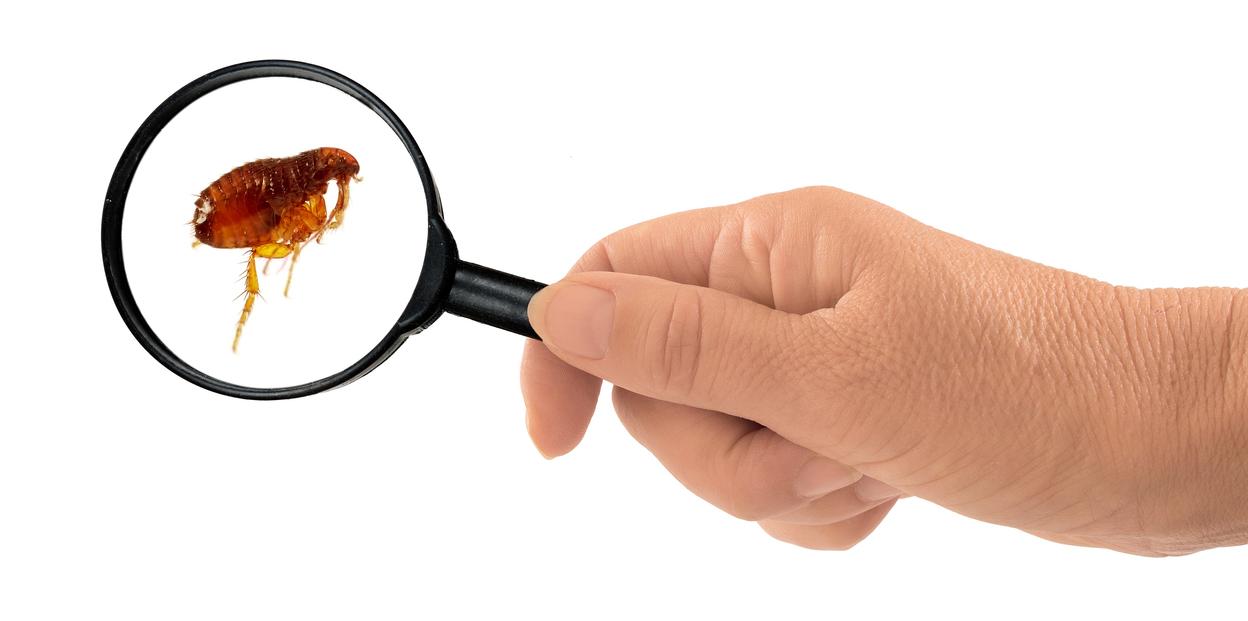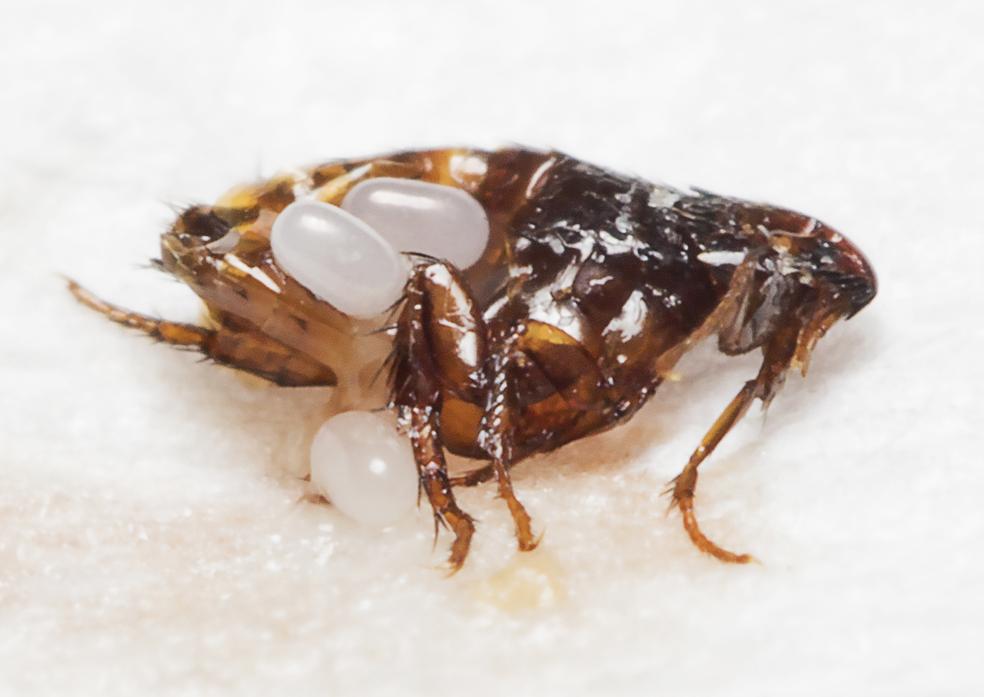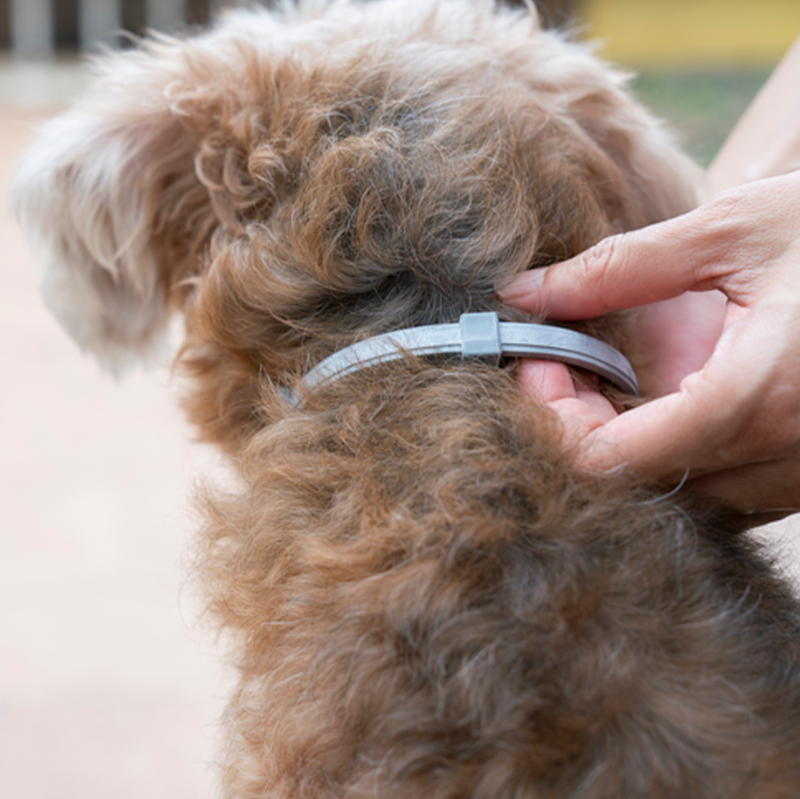Flea Season: How Fleas Grow and Spread
Written by GCP
Updated August 9, 2021 | 6 Minute Read
Every year, flea season strikes when spring has sprung — and it carries on straight through the summer and deep into fall. When is the best time to check your dog or cat for fleas? The answer is always the same: right away.
If you need to know the best ways to check for fleas (and, if you find the pests, deal with them), we’ve got a handy how-to article for you. To read “Flea Season: How to Find and Fight Fleas,” click HERE.
Besides when to check for fleas, you’ll be much better equipped with two other important sets of answers. First, where to look for fleas (because, while your pet’s coat is a flea’s preferred destination, it’s not always the starting point). Second, what fleas look like in the first place (because, while you might think fleas are all the same, their life stages — and their looks — change dramatically).
So, it’s time to know your enemy! A quick overview of the four stages in a flea’s life cycle will tell you about their varying looks and locations. And once you’ve found ’em, you can fight ’em.
1st Stage: Flea Eggs
On average, an adult flea lays 20 eggs twice a day, and between 500 and 2,000 eggs over a lifetime (typically: 2 to 3 months). The eggs are oval, pearly white, and approximately 0.5 mm in length.
- Unfortunate but true: The majority of flea eggs will be laid on your pet.
- Fortunate and true: The majority of flea eggs deposited on your pet will fall off quickly — over half of them within two hours, and over 75% of them within 8 hours. These eggs are significantly less of a problem than when they stick to your pet but they are still a problem! Because now they are all over your home and your yard.
IMPORTANT: Keep It Clean!
The most effective way to prevent infestation, during any of the flea’s life stages, is to maintain a tidy house and yard. Vacuuming carpets and sweeping under furniture, frequently, is your best bet. Mow the lawn and keep bushes trimmed. If your pet has their own soft bed or blanket: Wash it, regularly! Also, GCP’s Natural Flea & Tick Deterrent Chews help drive fleas from the fur to the floor, where they’re easier to catch with a vacuum or broom.
2nd Stage: Flea Larvae
Flea larvae hatch from the eggs, usually within 36 hours. The larvae are white, slender, covered with short hairs, and 2-5 mm in length. They must avoid light to survive.
- In your house, flea larvae will wiggle underneath furniture or bury themselves in carpet fibers. They also take advantage of flooring cracks and crevices, especially wood (but also tile with crumbly grout).
- Outside of your house, flea larvae will seek cool, shaded areas: beneath houses, near tree roots, and under bushes, shrubs, and fallen leaves.
3rd Stage: Flea Pupae
After larvae, it’s flea pupae. A flea larva produces a sticky cocoon in which to pupate — grow into full adulthood.
- On average, this stage lasts between 1and 3 weeks. But, a pupa can spend almost 5 months in its cocoon, protected from both drying out and insecticides —especially if that pupa is from the up-to-25% still clinging to the coat of your dog and cat.
- Both in and outside of your house, flea pupae are almost impossible to spot because they blend into backgrounds. They are initially white, then muted yellow, then light brown, and their sticky exterior easily and quickly attracts dust, dirt, and debris. In other words: camouflage.
IMPORTANT: Keep It Clean! (the reminder)
Outdoor cats aside, your pet spends the vast majority of its time in the home. Fleas are hardest to spot in the pupa stage but, honestly, they’re not easily found at any of the first three life stages. Again: The smart move is vacuuming, sweeping, and washing. (Sure, also yard work — but the domestic stuff is waaaay more important, here.) Constant cleaning is a win-win, too: You’ll put an end to countless invisible flea battalions and have an immaculate house.
4th (and Final) Stage: The Adult Flea
If this all sounds hopeless, trust us: It isn’t. We’ve come to the good news part of the article.
- Good news #1: An adult flea cannot survive unless it is living on your pet, and adult-stage fleas are the easiest ones to spot. Better yet, there are different ways to spot them.
- Good news #2: Don’t fret about your floors being flea fields, because they really aren’t. For example, adult fleas represent only 5% of the fleas in your home. Also, don’t forget that around 75%of flea eggs fall off of your pet’s coat within 8 hours. Sleek and efficient, the vacuum remains your weapon of choice.
- Good news #3: There are lots of solutions for you to safely, effectively, and naturally deal with fleas.
You can learn all about good news #1, #2, and #3 in the same article we suggested earlier in this one. To read “Flea Season: How to Find and Fight Fleas,” click HERE.













